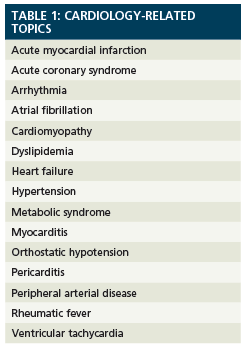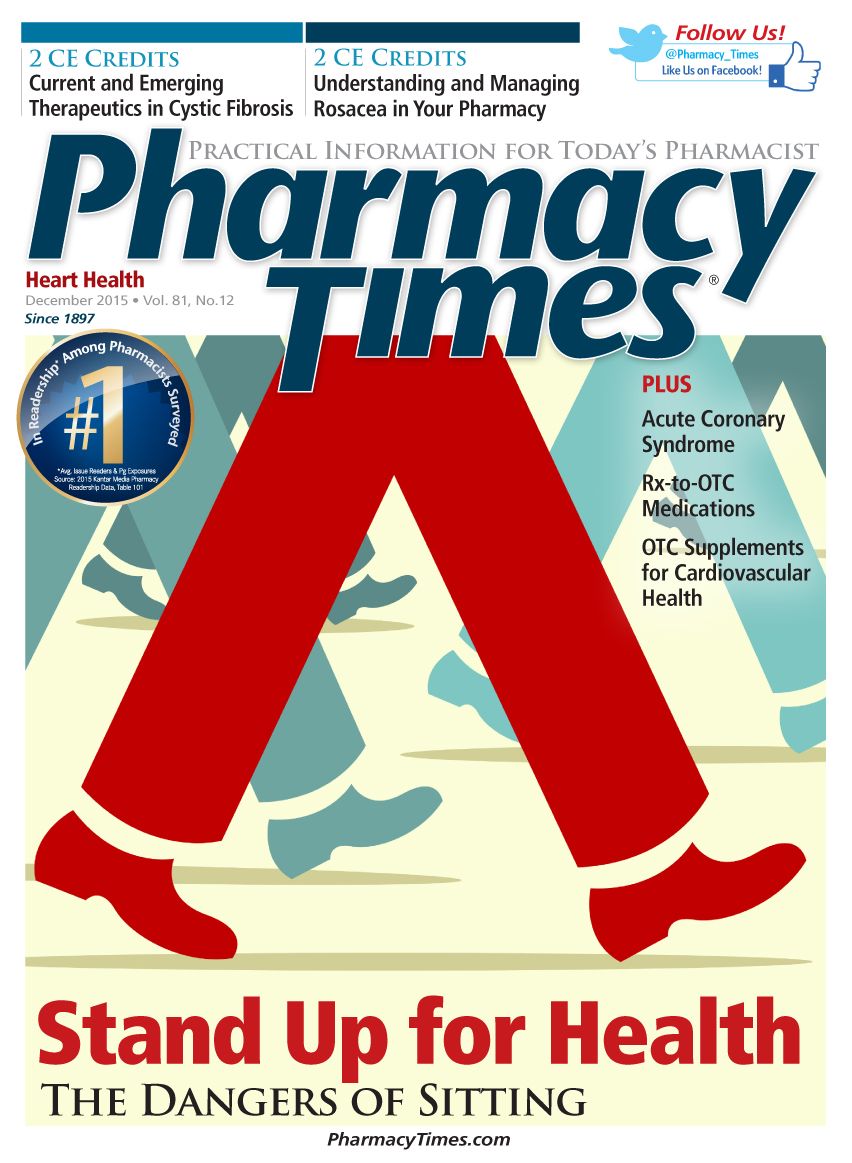Publication
Article
Pharmacy Times
Developing Professional Credentials: Cardiology as the Model
Author(s):
These days, pharmacists tend to be general practitioners, handling most problems in community and hospital settings and referring problems beyond their abilities to specialists.
These days, pharmacists tend to be general practitioners, handling most problems in community and hospital settings and referring problems beyond their abilities to specialists. Some pharmacists have areas of special interest that engross and challenge them. They wonder how they can fan that spark of interest into a fire of a career. This article uses cardiology as an example to discuss ways to develop specialty professional credentials.
Residencies
Residencies deliver professional credentials. The American Society of Health-System Pharmacists Resident Matching Program (natmatch.com/ashprmp) is the starting point for anyone looking for a residency. In 2015, 2811 pharmacists were matched with residencies; 1547 were not. If you failed to obtain a residency, do not despair. Many pharmacists are not interested in residencies, often because they cannot commit to years of clinical training at a reduced salary. There are other ways to build credentials, however.

The Back-to-School Myth
A postgraduate degree in business, epidemiology, biology, or statistics, or a plethora of other fields of study builds credentials. On the other hand, if you cannot commit to another degree, consider other opportunities that will develop your professional skills. For example, enroll in online classes, attend conferences or seminars, and network. Consider teaching, as it forces you to learn. All of these opportunities freshen skills, maintain competitiveness, and promote growth.
The ABCs
When building credentials, it often helps to make SMART (specific, measurable, achievable, realistic, and time-tagged) goals. Focus on small steps that work around your concurrent obligations and financial responsibilities. Set short- and long-term goals, and, at first, pick goals that are quick, easy, and feed your soul. For example, initial goals for cardiac specialization might include completing 6 continuing education (CE) modules in cardiology-related topics (Table 1) within 4 months. As you learn, you will find areas about which you want to know more. Once you have completed some basic CE programs, look for ones in advanced areas where new treatment strategies are emerging and/ or areas where patients need support (eg, anticoagulation, atrial fibrillation).
Volunteer
Some doors stay shut unless you knock loudly. Many people find dream jobs starting as volunteers, progressing to part-time paid positions, and eventually becoming full-time employees. Volunteering will help you develop contacts in your target field. The American Heart Association, WomenHeart (The National Coalition for Women with Heart Disease), or your local visiting nurse association may have volunteer vacancies that offer exposure and experience. Job applicants who have hearts of gold stand out in job searches.
Small newsletters and newspapers also welcome uncompensated submissions. Well-crafted cardiology-related articles display your expertise and add publications to your credentials. Writing 3 or 4 columns annually also shows potential employers that you have a sustained interest, educate others, and can meet deadlines.
Be a Joiner
Look for multidisciplinary organizations that promote your interest (Online Table 2). Membership fees provide resources and exposure that can be extraordinary. Joining an international association will give you an excuse to travel to conferences in faraway places, and joining smaller, local associations will give you contacts in your area.
Table 2: Organizations for Cardiology Professionals
- The American Association of Cardiovascular and Pulmonary Rehabilitation (www.aacvpr.org)
- The American College of Cardiology (www.acc.org)
- The American Heart Association (www.heart.org)
- The American Society of Hypertension (www.ash-us.org)
- Heart Failure Society of America (www.hfsa.org)
- InterAmerican Heart Foundation (www.interamericanheart.org)
- WomenHeart (www.womenheart.org)
- World Heart Federation (www.world-heart-federation.org)
Certification and Accreditation
Certification, a confirmation that certain requirements have been fulfilled, boosts credentials. It shows that you found a program, engaged in a formal study process, and systematically enhanced your skills.
Accreditation, a more rigorous process, implies technical competence. Accreditors assess applicants rigorously, usually using exams or evaluations in practice settings. Accreditation can be time-consuming and some accreditation programs only accept experienced applicants. Every program is different.
Earning certification or accreditation in cardiology is a stellar achievement (Online Table 3).
Table 3: Sources for Cardiology Specialty Credentials
Organization
Credential
American Heart Association
Advanced cardiovascular life support
Pediatric cardiovascular life support
· http://tinyurl.com/7w643vj to find a course near you
Board of Pharmacy Specialties
Board-certified pharmacotherapy specialist with added qualifications in cardiology
· www.bpsweb.org/specialties/qualification.cfm for portfolio requirement
American Pharmacists Association
Pharmacy-based cardiovascular disease risk management
· http://tinyurl.com/pfhynp7 for enrollment information
National Certification Board for Anticoagulation Providers
Certified anticoagulation care provider:
· https://www.ncbap.org/index.aspx
Accreditation Council for Clinical Lipidology
Clinical lipid specialist
· www.lipidspecialist.org/certchoose/cls/
End Note
The steps described above for cardiology can be applied to other specialties. Demonstrating an authentic commitment to a specialty will work in your favor when you apply for your dream job.
Ms. Wick is a visiting professor at the University of Connecticut School of Pharmacy where she teaches management and career planning.







